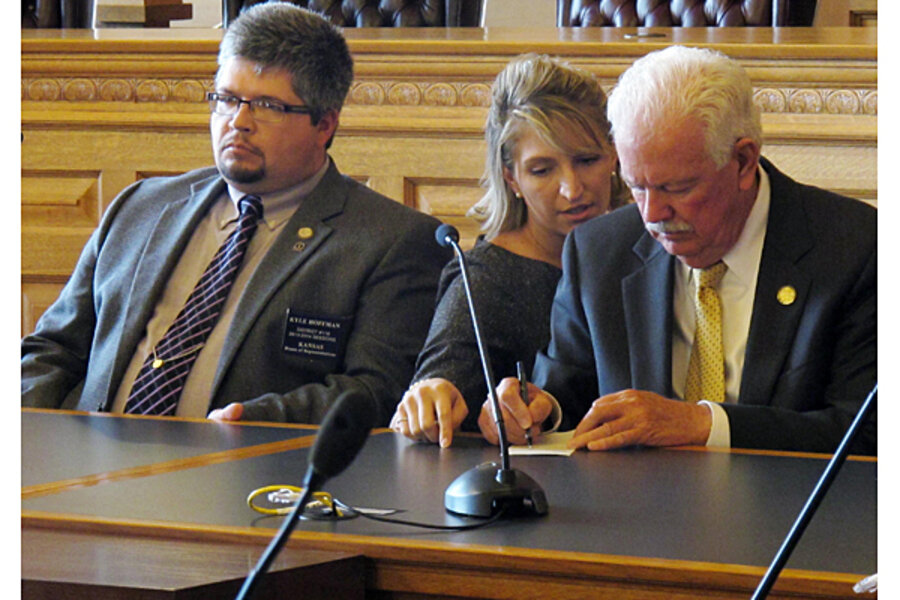Is Kansas on the path to financial crisis?
Loading...
Kansas Governor Sam Brownback (R) and the GOP-controlled legislature are struggling to accomplish two goals: They want to repeal the state income tax but need to balance a budget that, despite substantial spending cuts, faces a $700 million shortfall.
It is no easy trick. Their solution: new net short-term revenue increases accompanied by a promise to phase out the state’s income tax. This year’s final budget agreement includes both spending cuts and about $300 billion in new sales and income tax revenue that promise to balance the fiscal year 2014 books. But over the next five years, those new revenues will be overwhelmed by a proposed 20 percent cut in individual income tax rates, setting the stage for annual budget crises.
It isn’t easy to keep track of whether Kansas is cutting taxes or raising them. The agreement backtracks on income and sales tax cuts scheduled to happen this year. Much like the congressional tax debate of 2012, it is all about what baseline you prefer.
Let’s start with the new revenue, which the state projects will boost its coffers by about $365 million in 2014. About $195 million will come from setting the state sales tax rate at 6.15 percent, lower than the current temporary rate of 6.3 percent but above the 5.7 percent scheduled to take effect in July.
The remaining $170 million will come from changes to individual deductions. Itemized deductions, other than charitable contributions, will be trimmed by 30 percent in tax year 2013 and the haircut will gradually increase to 50 percent by 2017. At the same time, lawmakers scaled back a scheduled rise in the standard deduction, further increasing the tax base.
However, the revenue from these base-broadeners, which grow to about $480 million in 2018, will gradually be eaten up by phased-in cuts in the individual income tax rate and a partial restoration of the food sales tax credit (Kansas is one of the few states that taxes groceries).
In 2014, these tax cuts will reduce revenues by about $55 million (for a net tax hike of about $300 million). But by 2018, the revenue gain will disappear: The top income tax rate will drop from 4.9 percent to 3.9 percent, draining $465 million from the state budget while the food tax credit will siphon off another $20 million, leaving a net tax cut of about $5 million.
While the state is cutting taxes over the next five years, it also projects spending growth will slow sharply, averaging just 2.6 percent per year between 2014 and 2018. Even if these forecasts are realized, Kansas’ year-end fund balance will fall below the statutorily required 7.5 percent in fiscal year 2015 and balances will be exhausted by 2018.
The uncertainty will grow after 2018. These rate reductions are just the first step in a planned repeal of both individual and corporate income taxes. After 2018, individual income tax rates are scheduled to be reduced to zero (the pace is tied to a formula based on state revenue growth). Once the individual tax disappears, the state will begin to phase out its corporate income tax.
But even in 2018, the income tax will generate more than one-third of state tax revenues and the current plan does not explain how that revenue will be made up. Gov. Brownback and the state legislature may expect that their rate cuts will boost the economy and, in turn, revenues will be much higher than projected. But there is no credible evidence that tax cuts pay for themselves. And with the bulk of the state’s budget going to education and health care, spending will very likely exceed projections.
The result: Kansas is setting itself up for a period of ongoing budget crises and uncertainty that seems likely to undermine the attractive environment for business lawmakers are trying to create.







